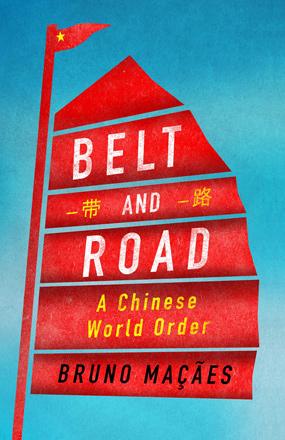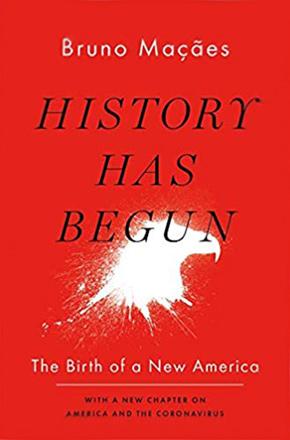You are here
Changing the global landscape
By Sally Bland - Mar 03,2019 - Last updated at Mar 03,2019

Belt and Road: A Chinese World Order
Bruno Macaes
London: Hurst & Co., 2018
Pp. 203
By explaining the Chinese mega-project called Belt and Road, scholar Bruno Macaes touches on the vast, fast-paced changes that are sweeping the world today. These changes are not only technology-driven, though technology certainly plays a crucial role, but the big shift is in the centre of gravity of world power, economic and eventually political.
With the US seemingly in decline, “new powers have been emerging in Asia that can no longer be seen as pale or imperfect copies of Western society. With the disappearance of the old ideological battle lines and the establishment of new economic links, a new geographic entity started to emerge: Eurasia, the supercontinent extending from Lisbon to Shanghai or even Jakarta”. (p. 2)
China’s growing economic power is an essential part of the engine driving this new reality, and its Belt and Road plan seeks to capitalise on it. Already, “Eurasian trade in goods is now close to $2 trillion each year, consistently more than double the volume of Transatlantic trade and significantly more than Transpacific trade.” (p. 3)
The author was previously Portugal’s Europe minister and is now attached to several US think tanks and Renmin University in China, as well as being a frequent commentator for major international media. His previous book was “The Dawn of Eurasia”, so one can see that this is a subject in which he has great interest and, presumably, expertise. This time he tackles it from the Chinese vantage point.
While Belt and Road has been dubbed the modern Silk Road, it is so much more. While the latter was basically a trade route, Belt and Road sets the parameters for building major industrial zones (belts), connecting them by rail, road and sea with new transportation routes, and providing other infrastructure that will make this system fast and productive.
By developing previously remote areas and linking them to the global market, this plan would change the lives of millions of people previously on the margins or left out of globalisation. In fact, one of the attractions of Belt and Road for developing countries is China’s success in pulling hundreds of millions out of poverty as the country swiftly modernised. Central Asia in particular will be radically transformed if the Chinese plans are implemented.
In the author’s view, “The best image of the Belt and Road is not the trains crossing the Eurasian supercontinent, or the ports and industrial parks opening up along the way. It’s the cities being built up from scratch. These are what will change the physical and human landscape of the planet, creating new ways of life, new ideas, new adventures.” (p. 151)
Macaes examines Belt and Road from many angles, such as how it embodies the Chinese philosophy of Tianxia, which stresses interdependence, cooperation and shared destiny, as opposed to what the Chinese view as the chaos and conflict of today’s world under Western leadership. Belt and Road can also be seen as the next stage of China’s trajectory from originally wanting to foment revolution, to learning from developed countries in order to modernize, to integration into the global economy and the adoption of a more active foreign policy strategy.
There are many examples of how Belt and Road would benefit China’s economy, as well as the reservations of other countries — India, the US, EU and others. Some of the reservations are related to the fact that Belt and Road will mainly be financed by Chinese loans to the countries concerned, which raises fears of saddling developing countries with an unwieldy debt burden. Other negative reactions come from countries that simply don’t want to cede to Chinese power, for it is clear that: “Whoever is able to build and control the infrastructure linking the two ends of Eurasia will rule the word”. (p. 3)
Less self-serving would be objections to the security system planned for Belt and Road. Macaes reports that “Frontier Services Group, the security services firm founded by Erik Prince, former Blackwater chief… is actively working with China on Belt and Road projects”, perhaps hoping for a rebirth after Blackwater’s fiascos in Iraq, but more likely just to make money. (p. 128)
Another concern might be the environmental effects of such a huge undertaking, which the author says little about.
Despite reservations, the project is definitely expanding as seen in the fact that about one hundred countries have signed agreements with China on projects related to Belt and Road.
This book is interesting to read because the author has an engaging, animated writing style. Though Belt and Road is essentially an economic project, the book is written so that non-experts can understand it. It is recommended reading for those who are curious about who will rule the world when the US empire recedes.
Related Articles
AMMAN — On the occasion of the 40th anniversary of the establishment of diplomatic ties between Jordan and China, a book highlighting Jordan
History Has Begun: The Birth of a New AmericaBruno MacaesLondon: Hurst and Co., 2020Pp.
AMMAN — China is keen on increased cooperation with Jordan and will continue to support development in the Kingdom, according to Zhang Haiha















